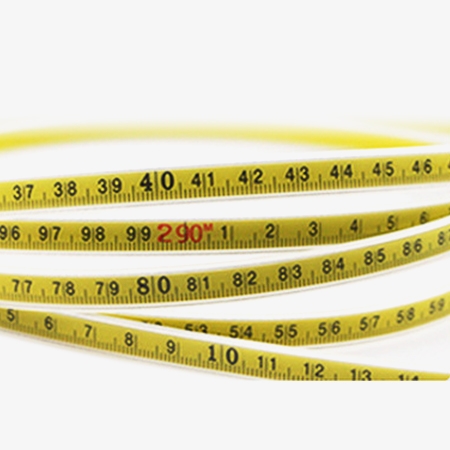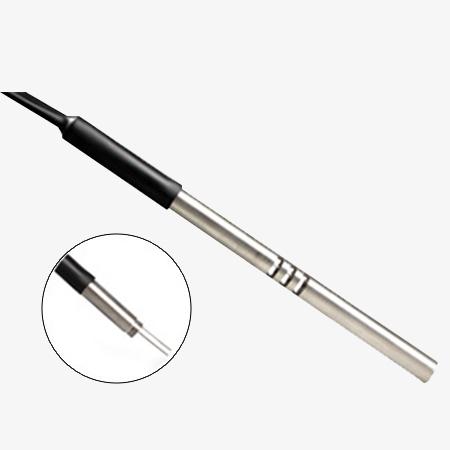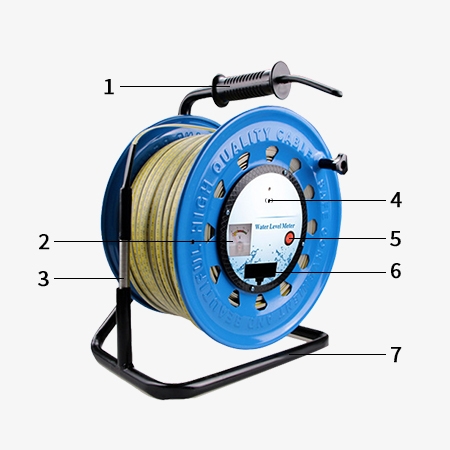The water tank gauge level indicator is a simple and practical measuring tool. The steel ruler water level meter is made of high-quality materials, is corrosion-resistant and wear-resistant, and has a reliable structural design. It can work stably even in harsh environments such as the field and has a long service life.

Professional Portable Water Level Monitoring Solution
- The water tank meter gauge is powered by a lithium battery, with a stable output voltage, avoiding the influence of voltage fluctuation on the accuracy of the water level sensor. Small size and low power consumption, battery life of up to two years, easy to carry and install, especially suitable for field, mobile, or temporary monitoring scenarios.
- The level meter for a water tank is equipped with a stainless steel probe with a diameter of 14mm, suitable for small installation space, and has strong corrosion resistance (suitable for complex water quality such as salt water and sewage), high sensitivity, wear resistance, and durability.
- Water level tester uses a steel ruler cable, made of carbon steel, with high tensile strength, excellent wear resistance and load-bearing capacity, a rigid structure that can resist external force stretching and friction damage, strong and break-proof, equipped with a PE transparent sheath, clear scale.

3-minute Rapid Deployment of Water Level Gauge
- The water tank meter is equipped with stable feet, easy to place and stable. The backpack can be purchased for more convenient use within a 300M range.
- When the water level reaches the preset alarm threshold, the buzzer will immediately emit a loud sound, which is suitable for occasions that require rapid response to water level changes, enhancing the reliability and safety of the system.
- Water tank meter gauge adopts a portable design, does not require a power supply/communication cables, and can be thrown and measured upon arrival at the site (such as magnetic fixation/bracket suspension), and can be deployed within 3 minutes (traditional fixed type requires ≥2 hours).
Applications
The use scenarios of water level meters cover multiple fields such as industry, water conservancy, environmental protection, and energy. Its applications are diversified according to the characteristics of the measuring medium, environmental requirements, and functional requirements.

Dam

Hydroelectric Power Station

Water Tank

Agricultural Irrigation
| Model | SISCO-WLM-GLT500A |
| ltem | Parameter |
| Shell Material | ABS, Metallica |
| Measurement Range | 30m,50m,100m,200m,300m,400m,500m |
| Battery Power | 9V Lithium Battery |
| Instrument for Temperature | -20℃~+60℃ |
| The Response Time for Output | ≤1ms |
| Measurement Error | ≤±0.5mm |
| Adaptation Range of Water Quality | 10μω~1000μω |
| Measurement Signal | LED, Buzzer, Electricity Meter |
| Construction of Cable | Conductor: Multi-strand tinning copper wires twisted |
| Core Wire: Special PP mixed insulation | |
| Ecderon: Special PUR or PE mixed | |
| Ecderon Color: natural color | |
| Rated Voltage | 300V |
| Testing Voltage | 2000V |
| Insulation Resistance | >200MΩ×km |
| Temperature Range | -1-40°℃~+90°c |
| Weight | 3.95kg~23.5kg |
Structure Diagram

- Handle
- Peak Display
- Stainless Steel Probe
- Peak Display
- Button
- Battery
- Stand
Q1: How to Read a Water Level Gauge Correctly?
A1: The key to reading a water level gauge correctly is to first check the device status and environmental conditions to ensure there are no interference factors, then use the corresponding method according to its type (such as glass tube, float type, pressure type or radar/ultrasonic) to read it, usually by looking directly or viewing the display, paying attention to the units and decimal points; at the same time, make sure the device is calibrated, and pay attention to factors such as bubbles and dirt that may affect the accuracy of the reading. Finally, record the reading and do daily cleaning and maintenance to ensure the reliability of the measurement results and the life of the equipment.
Q2: How to Calibrate a Water Level Meter?
A2: The water level meter calibration needs to be completed in a static water body. First, place the probe into a known depth (such as 0cm or standard water level) to adjust the zero point, then calibrate the range by comparing the actual water depth, and set compensation parameters according to the water temperature to eliminate thermal expansion and contraction errors. After completion, record the calibration data and recheck it regularly (such as monthly) to ensure measurement accuracy.
Q3: Common Operational Errors When Using Water Level Meters
A3: Common operational errors when using water level meters include improper installation, neglect of calibration, and neglect of environmental factors. For example, when installing the probe tilted or close to the inlet/outlet, the measured value may be too large or too small, or even fluctuate unstably; failure to perform zero point calibration or neglecting that the medium density does not match the device setting value may cause inaccurate readings.
Tips: Daily Maintenance Methods for Water Level Meters
Daily maintenance of water level measurement gauges mainly includes regular cleaning, checking the sealing, preventing collisions, and regular calibration. During regular cleaning, wipe the surface with a soft damp cloth, avoid using acidic or abrasive cleaning agents, and pay attention to cleaning the sensor part to prevent dirt from affecting the measurement accuracy. Checking the sealing can ensure that there is no leakage at the connection and avoid reading deviations due to aging or damage to the sealing ring.
Thank you for buying industrial test and measurement equipment on SISCO.com, all products sold by SISCO and the partner cover a 12 months warranty, effective from the date of receiving the products.
What is covered?
SISCO is responsible for providing free spare parts, and free technical support to assist the customer to repair the defective products until the problem is solved.
What is not covered?
- Product purchased from anyone other than a SISCO store or a SISCO authorized reseller.
- Expendable parts.
- Routine cleaning or normal cosmetic and mechanical wear.
- Damage from misuse, abuse or neglect.
- Damage from use of parts other than SISCO approved.
- Damage from use outside the product’s usage or storage parameters.
- Damage from use of parts not sold by SISCO.
- Damage from modification or incorporation into other products.
- Damage from repair or replacement of warranted parts by a service provider other than a SISCO authorized service provider.
- Damage caused by the application environment not meeting the product usage requirements and the failure to perform preventive maintenance.

